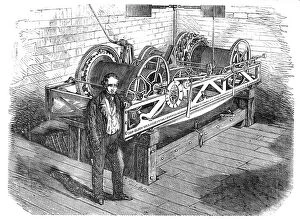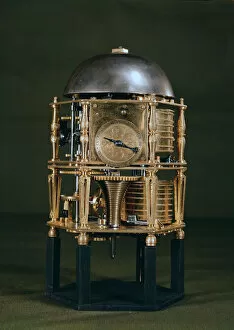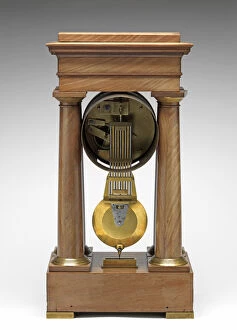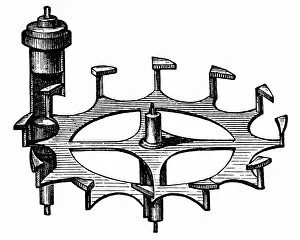Escapement Collection
"Unlocking the Secrets of Escapement: A Journey Through Time" Step into the world of escapement, where timekeeping mechanisms come to life
All Professionally Made to Order for Quick Shipping
"Unlocking the Secrets of Escapement: A Journey Through Time" Step into the world of escapement, where timekeeping mechanisms come to life. From the intricate designs of a decimal clock crafted between 1798-1805, made with pine, brass, and enamel, to the mesmerizing front and underneath views of a hexagonal table clock movement by Nicolas Lemaindre in 1619 - gilt-metal shining through history. The Clock of the Royal Exchange engraving takes us back to an era when time was not just measured but celebrated. The decimal clock reappears multiple times throughout our journey, showcasing its significance in revolutionizing timekeeping during that period. As we delve deeper into escapement's essence, we discover hidden treasures like the back view of another hexagonal table clock movement by Nicolas Lemaindre from 1619. Its gilt-metal construction tells tales of craftsmanship and innovation that have stood the test of centuries. But escapement is not limited to clocks alone; it extends its influence even further. The movement of solids captured in c1850 reminds us how this concept transcends boundaries and finds applications beyond measuring hours and minutes. Escapement invites us on a captivating adventure through time - exploring ancient masterpieces alongside modern marvels. It serves as a reminder that behind every tick-tock lies an intricate mechanism designed to keep our lives synchronized with precision. So let us embrace escapement's enchantment as it intertwines artistry, engineering brilliance, and historical significance. Let these glimpses into its diverse manifestations ignite curiosity within us all – for there is always more than meets the eye when it comes to capturing moments in eternity.




















